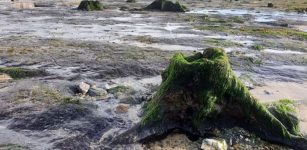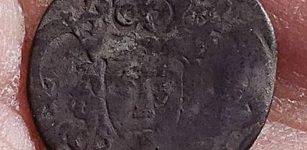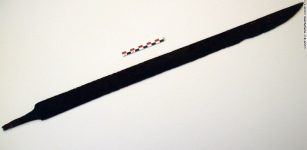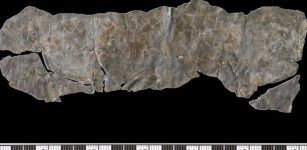Puzzling Construction Of Unique Sunken Ship From The 17th Century Examined
Conny Waters - AncientPages.com - While conducting a routine measurement in the Trave river, the Kiel-Holtenau Waterways and Shipping Authority (Wasserstraßen- und Schifffahrtsamt/WSA) discovered a ship at a depth of eleven meters. Researchers from Kiel University spent eight months examining the puzzling construction. The result: they had found a nearly 400-year-old ship from the Hanseatic period with 150 barrels on board - a unique find in the western Baltic region.
13 dives totalling 464 minutes provided the researchers with enough material for their first extensive report on the sunken ship from the Hanseatic period. Credit: Scientific diver Christian Howe
The ship's wooden beams and large parts of the cargo are left. They are covered in mussels and must have lain there in the murky water of the Trave river for centuries. "Independent dating of the ship's timbers in three different laboratories revealed that the ship must have been constructed in the mid-17th century," said Dr. Fritz Jürgens of the Institute of Prehistoric and Protohistoric Archaeology at Kiel University.
"You always hope to make a find like this, and suddenly you have one right before your eyes. It is really unique—also for me personally," continued Jürgens. The archaeologist examined the wreck together with his team and the university's Forschungstauchzentrum (scientific diving center). Researchers from the Hanseatic City of Lübeck and the University of Göttingen also dived with him to inspect the remains of the ship.
The ship as the workhorse of Baltic Sea trade
The Institute of Geosciences at Kiel University was able to identify the cargo as lime. The ship evidently transported quicklime, which was a sought-after building material at that time. "In the Middle Ages and early modern period, limestone was quarried, fired and then extinguished. This was made into mortar," said Jürgens.
The dives revealed massive shipworm damage. Credit: Scientific diver Christian Howe
According to initial findings, the ship must have been on its way from Scandinavia to Lübeck, but never made it. Further investigations are needed to determine why the Hanseatic ship sank. Initial indications suggest that the ship could have run aground on a bend in the Trave river, where it was seriously damaged and therefore sank.
Serious risk to parts of the wreck
Based on photos and videos, the researchers produced 3D models and used these to determine the original length of the ship to be 20–25 meters. The ship was therefore a medium-sized cargo sailing ship, the workhorse of Baltic Sea trade. "This find is extraordinary for the western Baltic Sea region," said Jürgens. Until now, similar wrecks dating from different centuries have only been found in the eastern Baltic Sea region.
Dr. Fritz Jürgens has reconstructed the sunken ship. Credit: Dr. Fritz Jürgens, Kiel University
The dives showed that the wreck was at serious risk of erosion and exposed parts were infested with shipworm. If no protective measures are taken, the wreck would be destroyed within a few years and this evidence of the extensive maritime trade of the Hanseatic City of Lübeck would be lost forever. In order to prevent this from happening, the researchers at Kiel University are working with the City of Lübeck and other institutions to produce a strategy for further handling and protecting the wreck. They are considering salvaging and then preserving it.
13 dives totaling 464 minutes
In February 2020, the Kiel-Holtenau Waterways and Shipping Authority (WSA) was conducting a routine examination of the navigable channels of the Trave river when they discovered an anomaly in the multibeam echosounder results. Divers then investigated the site in August 2021 to rule out any risk to passing shipping. This is when they discovered the first indications of it being a wreck and notified the Obere Denkmalschutzbehörde (upper historic monument protection authority) of the Hanseatic City of Lübeck.
See also: More Archaeology News
This authority commissioned the Institute of Prehistoric and Protohistoric Archaeology at Kiel University to examine the wreck further. In November 2021, the researchers began their work with the support of the Forschungstauchzentrum (scientific diving center) and the Lübeck Port Authority (LPA). A month later, the researchers were joined by scientific diver Christian Howe, who is an experienced underwater photographer and cameraman. 13 dives totaling 464 minutes provided the archaeologists with enough material for their first extensive report.
Written by Conny Waters - AncientPages.com Staff Writer






















